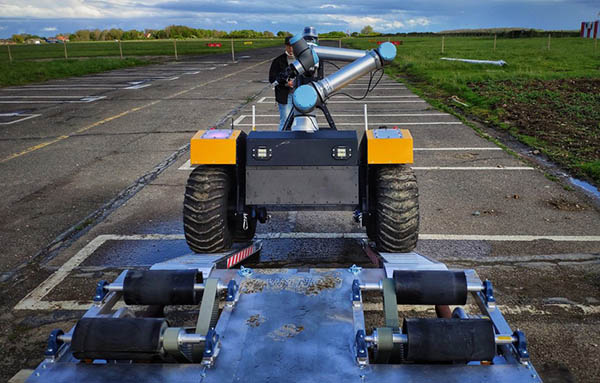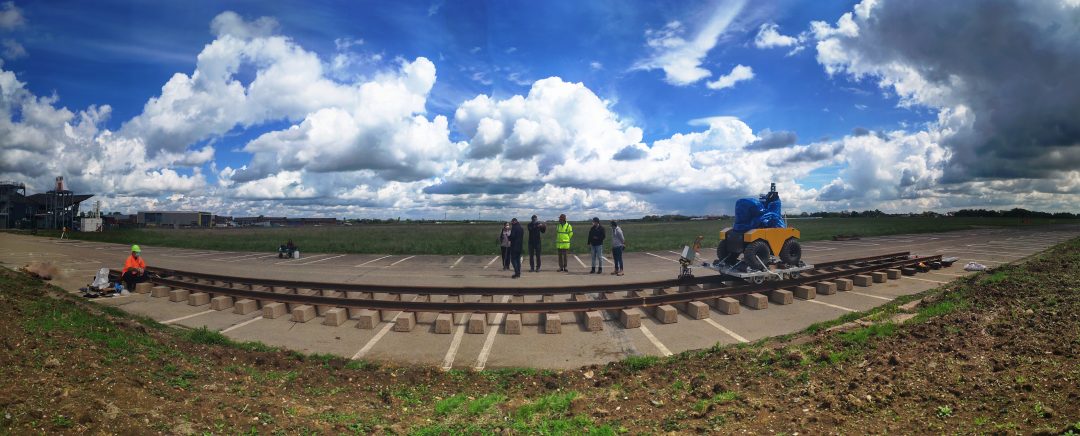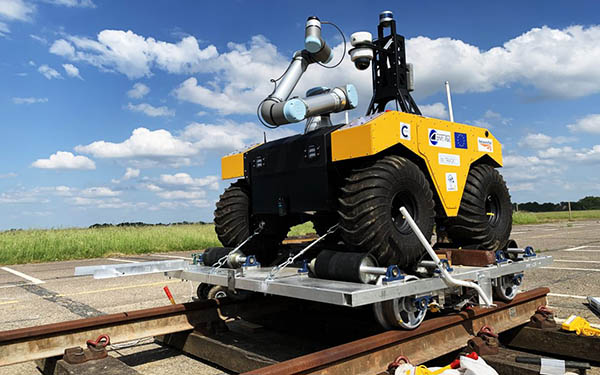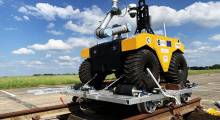Although railroads have been around for hundreds of years, trains are still a key part of transportation infrastructure. Railroads haul the most freight of any form of transport in terms of ton-miles, a measure of cargo volume that considers weight and distance carried, according to a report from the U.S. Bureau of Labor Statistics. Moreover, railways continue to be the most efficient, quickest, and cheapest method of transporting people and goods in the world. With 2.1 trillion tonne-kilometers of rail freight transported in 2020 in the U.S alone, the demand for safe and well-maintained railway lines is clear, noted Clearpath Robotics.
However, railway inspection and repair tasks are dangerous and difficult jobs for humans, said the Kitchener, Ontario-based company. They include unsociable hours, long distances, exposure to the elements, and a variety of hazards.
To maintain an appropriate degree of safety, it is important to reduce the number of people out on the track, while improving the observation and measurement of the railway infrastructure. In addition, new systems must collaborate well with people, according to Clearpath.
Warthog UGV meets trains
In2Smart 2 is a joint project between Cranfield University and Network Rail using a Clearpath Warthog unmanned ground vehicle (UGV) to develop an autonomous integrated inspection and repair system for railways. Cranfield University is a postgraduate institute focused on education, research, and development for industry in Bedford, England. Network Rail is the main line railway infrastructure for Great Britain.
Together, they developed a robotic project that would demonstrate the command and control of autonomous inspection and repair. Starting from a job control system, an instruction would be fulfilled with a physical system that seeks a fault, and then a repair action would be made. Furthermore, the range, navigation, and communication challenges would also be demonstrated at scale.
However, such an autonomous system for railways isn’t as simple as it might seem. The environment of the railway infrastructure is surprisingly tough for autonomous devices. For example, there are some places with no communications or GPS (such as tunnels and Faraday cages), few opportunities for charging, and uneven surfaces with obstacles.
The scale of the challenge also required millimeter accuracy within a 1,000 km (621.3 mi.) network to, for example, repeat the measurement of a crack. In2Smart 2 was intended to bridge those gaps.
To get the project up and running quickly, particularly for accelerated hardware integration, the In2Smart 2 team chose the Warthog robotic platform. The UGV allowed the team to test sensor systems, navigation concepts, and obstacle detection and avoidance within ready-to-run hardware and software.
Clearpath said its robust running gear was particularly suitable for running across railway infrastructure. The team also built a trolley to mount the Warthog on the railway to increase its range while carrying more instruments.
Integration of the subsystems was a core challenge, according to the team. There were often unexpected outcomes in hardware, electronics, and software—such as Arduino boards that did not all talk. Therefore, the project needed a team with a range of skill sets.

Robots to keep railways safe
The Warthog’s main role in autonomous rail inspection and repair is to carry the sensors and tools needed for fixing the railway track. The mission for each investigation job involves a launch on-site before seeking faults. Physical movement is required to observe and inspect the infrastructure. In this stage, an accurate repeatable location must be achieved, said the researchers.
Measurement of the fault, followed by monitoring of degradation—potentially pver many months on a real railway—would require repeat visits. The system would then deploy the tool to fix the fault, return data in the first instance, before system recovery, and during closure of the job.
To achieve these outlined tasks, the UGV rig was set up with a sensor pack of RTK-GPS module from NovAtel smart6-I, Lord 3DM-GX5-25, odometry, Velodyne VPL-16 lidar, and an AXIS M5525-E PTZ Network Camera augmented by a robot wrist camera and stereo vision.
The In2Smart 2 team also equipped the Clearpath system with ultrasonic flaw detection. Data fusion of the navigation and location sensors is necessary to improve location accuracy and to bridge GPS limitations. These can be significant challenges for the typical railway application environments.
On the other hand, the robot wrist camera can provide additional views of the rails and track components. Next, stereo vision is used to get a closer range for obstacle detection. Finally, ultrasonics allow for rail flaw detection.
Ultimately, the Warthog offered the researchers a mobile platform that they could easily outfit with the sensors and accessories they needed. They found the robot to be robust and said they were able to use its sensor suite.
“The Warthog worked perfectly, and the GPS was good for 0.2 m, including RTK,” said Prof. Andrew Starr, head of the Centre for Life-cycle Engineering & Management at Cranfield University.

Next steps for In2Smart 2
The In2Smart 2 team successfully demonstrated autonomous flaw detection with a “rail robot” that has shown repeatable measurement in controlled conditions.
With this project completed, the team’s next steps will be to develop measurement sequences on a railway test track with improved location measurement. Their goal with such advancement is to ultimately understand how autonomous vehicles can be permitted to operate on a working railway.
The project is already part of a major European programme, Shift2Rail, which includes almost all the European railway infrastructure operators, train operating companies, specialist contractors, and manufacturers. As part of this effort, the In2Sports 2 team partnered with Trafikverket and Strukton.
The team’s work was published at the Seventh International Conference on Mechatronics and Robotics Engineering (ICMRE).
Members from both Cranfield University and Network Rail comprised the In2Smart 2 project team. The Cranfield University team members included of Prof. Starr; Dr. Isidro Durazo Cardenas, a lecturer in Through-life Engineering Services; research fellow Dr. Haochen Liu; and Ph.D. students Masoumeh Rahimi, Miftahur Rahman, and Wael Nofal.
The Network Rail team included Amanda Hall (engineering expert – systems), Robert Anderson (principal engineer and head of RCM – fixed assets), David Burbridge (senior engineer – technical services), and Sreenivaasa (Sri) Pamidi (project manager Shift2Rail – R&D).
Article topics
Email Sign Up

















